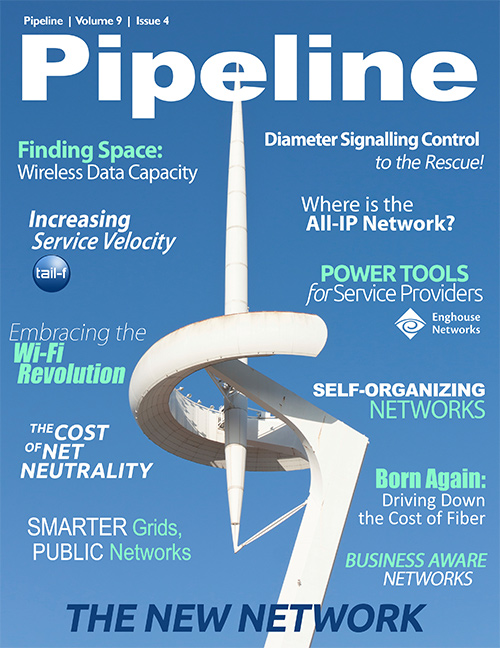Self-organizing Networks and the Shifting MNO Battleground
By: Cyril Doussau, Vikas Trehan
 Mobile network operators (MNOs) have recently seen a significant increase in network traffic as a result of subscribers’ dependence on mobile data services, presenting a considerable barrier to
sustaining MNOs’ bottom lines. In fact, according to Nielsen, 2011 saw an 89 percent increase
in mobile data consumption. Mobile traffic is expected to grow even more over the next year, further expanding the amount of network congestion that MNOs must proactively manage.
Mobile network operators (MNOs) have recently seen a significant increase in network traffic as a result of subscribers’ dependence on mobile data services, presenting a considerable barrier to
sustaining MNOs’ bottom lines. In fact, according to Nielsen, 2011 saw an 89 percent increase
in mobile data consumption. Mobile traffic is expected to grow even more over the next year, further expanding the amount of network congestion that MNOs must proactively manage.
Although not a recent development, this growth has forced MNOs to increase their network capacity by migrating their TDM backhaul to Ethernet. However, while attention was focused on gaining backhaul capacity efficiency, the bottleneck of mobile data traffic has shifted to the radio access network (RAN). As consumers come to expect and demand better mobile service performance, migrating RAN to LTE is seen as an obvious and straightforward solution.
For RAN operations and engineering teams, the arrival of LTE is further extending the RAN’s challenge of achieving KPIs. These new infrastructures introduce new network elements and thousands of parameters that RAN organizations need to configure, monitor, assure, and optimize parallel to legacy activities like mobilizing management entities, serving gateways and packet data network gateways. New technologies also mean new equipment vendors in the network, leading to more management systems, proprietary parameters and interfaces. It’s no surprise that RAN organizations need more efficient ways to: sense the performance and quality of the network, detect and compensate for service outages, optimize coverage, capacity and performance and find an effective way to mitigate traffic load.
Furthermore, because LTE will take years to be completely rolled out and configured in all markets, MNOs must face their current RAN optimization issues head-on or risk degrading customers’ quality of experience (QoE). At the same time, MNOs are struggling to manage their growing arsenal of networks (2G, 3G and now 4G) with existing resources, and are in desperate need of an easier and more cost-effective strategy to simultaneously augment current network capacity and assure customer experience.
Self-organizing networks (SON), which are steadily growing in recognition and popularity, optimize the management of all RAN operational phases. Despite initial push back from engineers concerned about their job security, SON is a natural – if not necessary – performance management solution to monitor and manage RAN complexity; it automatically configures RAN systems, increases capacity, maximizes performance and remediates network glitches and degradation as they occur.





















